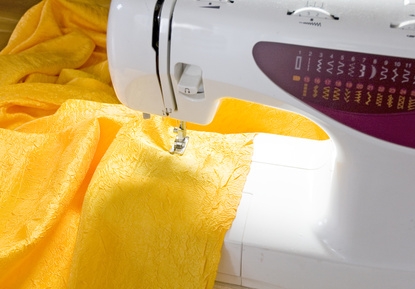
Your seat cover design and precise sewing instructions will vary depending on how your car seat is shaped, how large it is and whether you're making a custom fit seat cover or a seat cover that will fit most types of seats. No matter what type of seat cover you're making, you'll want precise measurements of your car seat, plenty of fabric and a sewing machine.
Before you begin, you should measure your car seat so you know how much fabric you'll need. Measure the back and front of your back support and over the seat. After you've recorded your measurements, add about 1 3/8 inch on all the sides for the hem.
For a custom seat cover, you'll want to make separate "sleeves" for your car seat's seat cushion, back support, and headrest (if applicable).
If you want to make seat covers that are custom-made to fit only your car seat, you will use your exact seat measurements as a template. If you can take the seat out of your car, it might be easier to get precise measurements and fit.
For a custom seat cover, you'll want to make separate "sleeves" for your car seat's seat cushion, back support and headrest (if applicable).
If you want to make seat covers that can fit several types of car seats, you'll want to use a stretchy fabric (possibly a spandex blend), and instead of making a "sleeve" with a front and a back, you'll want to make a cover for the front of your seat, then sew draw cords onto the cover that will stretch around the back of the seat and hold the cover on the front.
Once you have the measurements for your seat covers, you'll want to cut the length of the seat cover across your fabric width. Then, place the fabric on the seat and mark where your hemlines and cuts need to be.
Turn your fabric on your sewing machine so the wrong side is facing out. To sew two parts of your seat cover together, or make your hems, you'll turn under a 3/8-inch seam allowance and make a crease in the fabric so you know where to sew. Then, top stitch the seams down. The heavier the material you're working with, the longer you'll want to make your top stitch.
Once your pieces of fabric are sewn together, you'll want to test fit the seat cover onto your seat to see if you need to make any adjustments. If your seat cover slips on easily, you should be aware that it might actually be too big, and wrinkle when you sit on it. The seat cover should fit very snugly to your seat.